
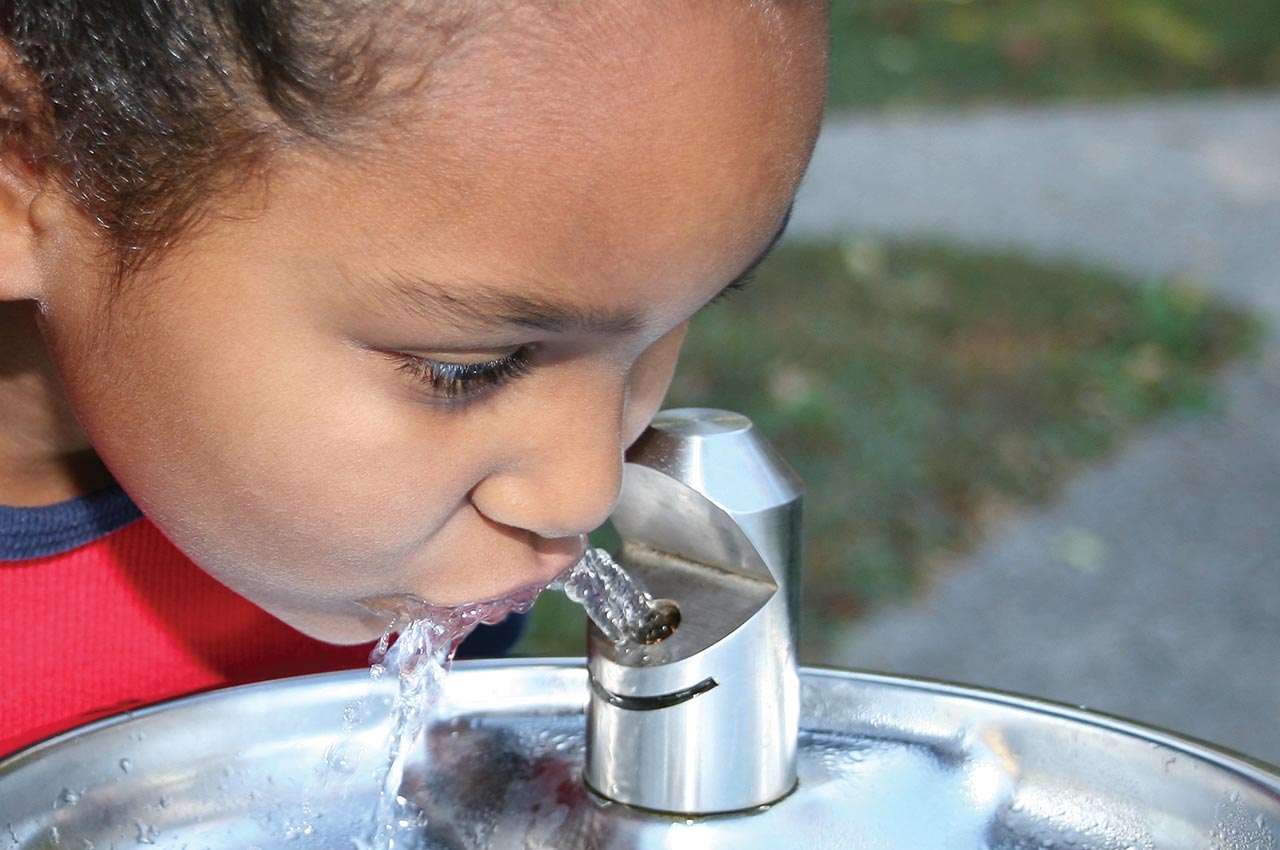
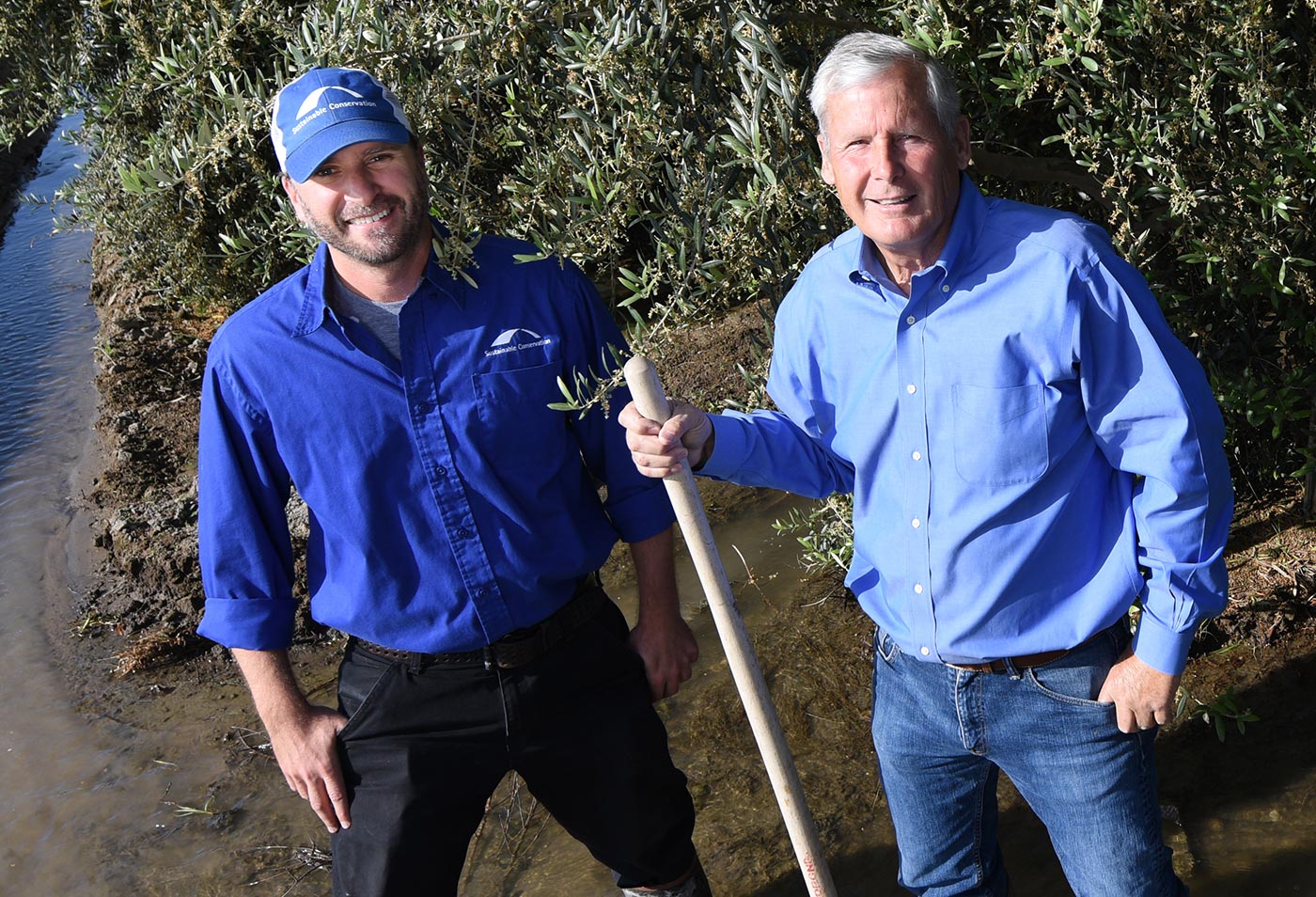

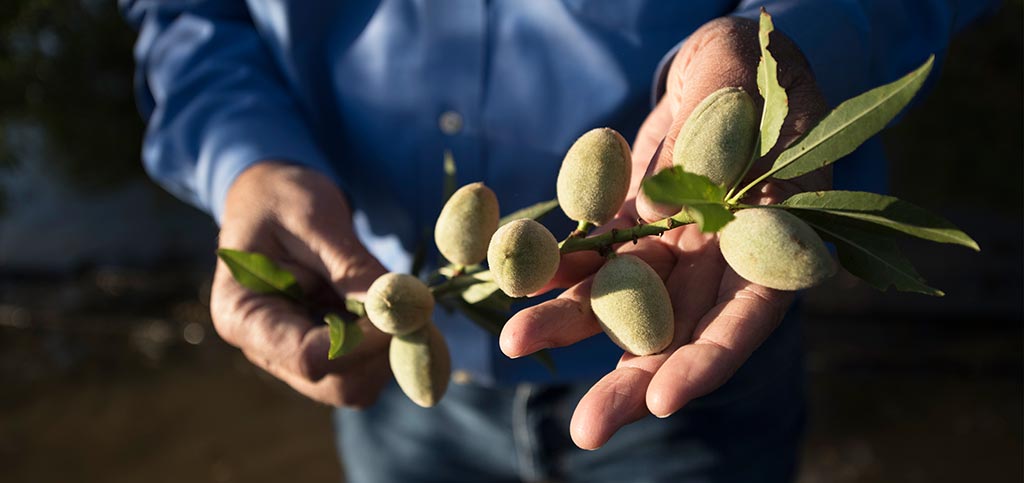
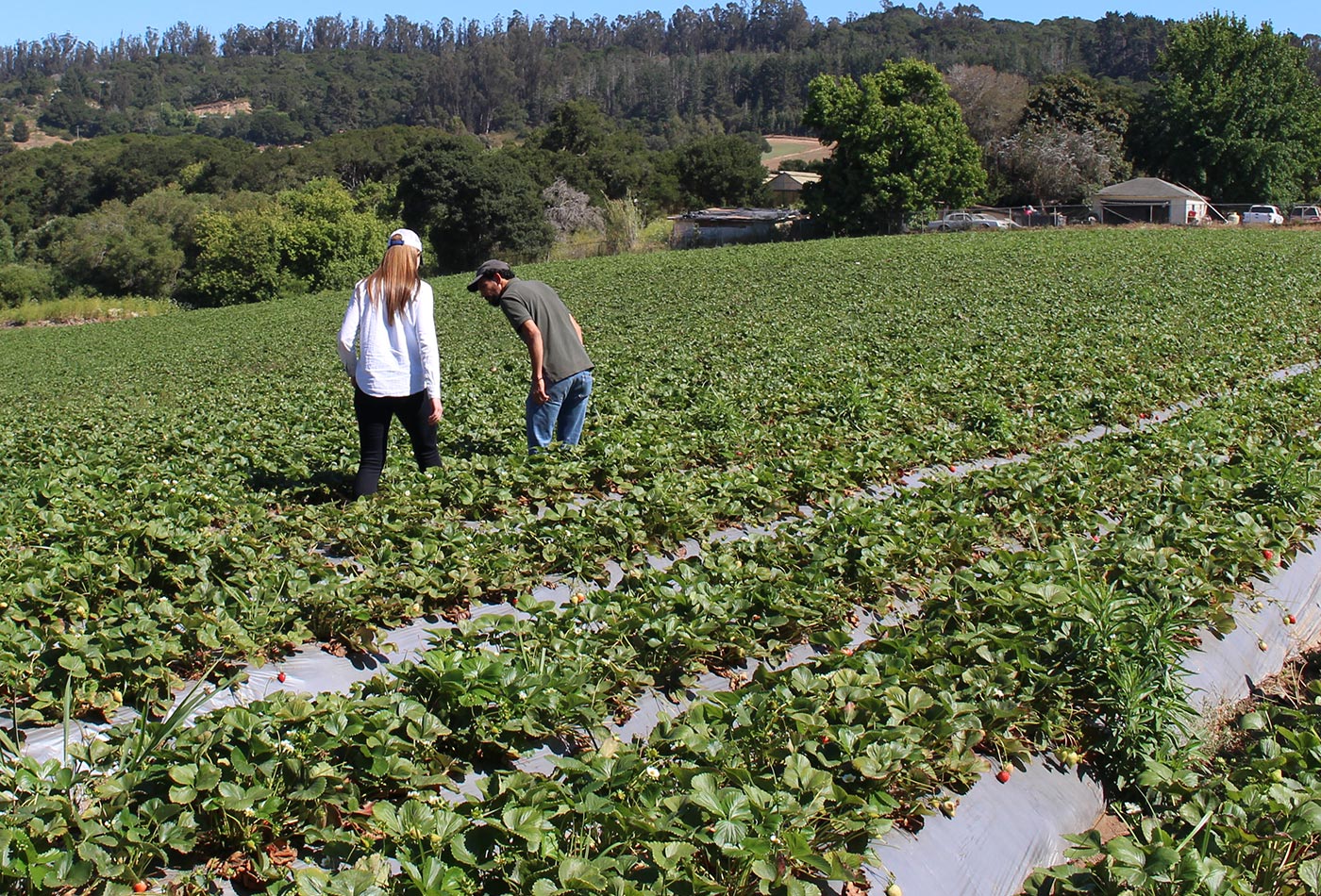
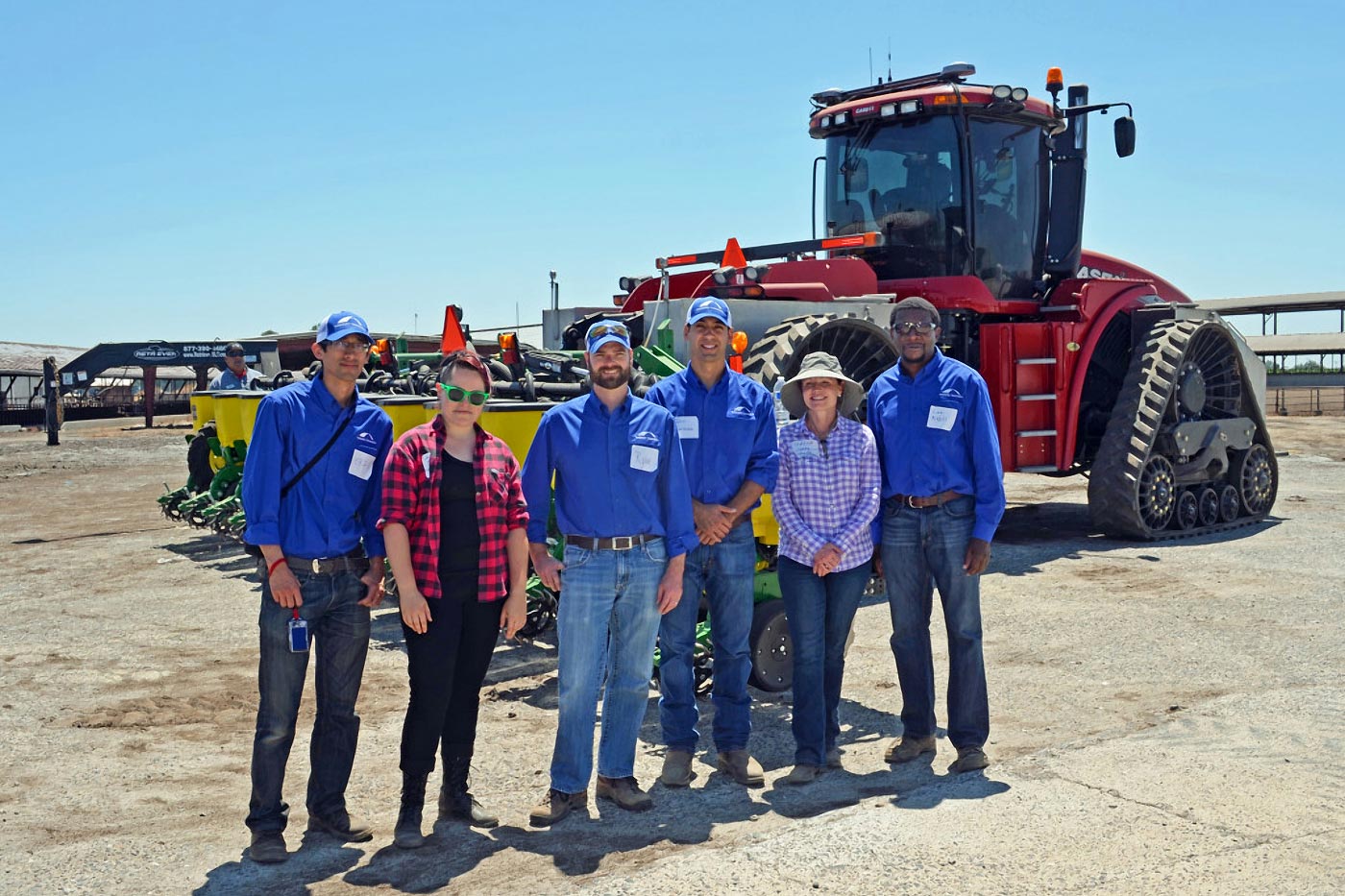
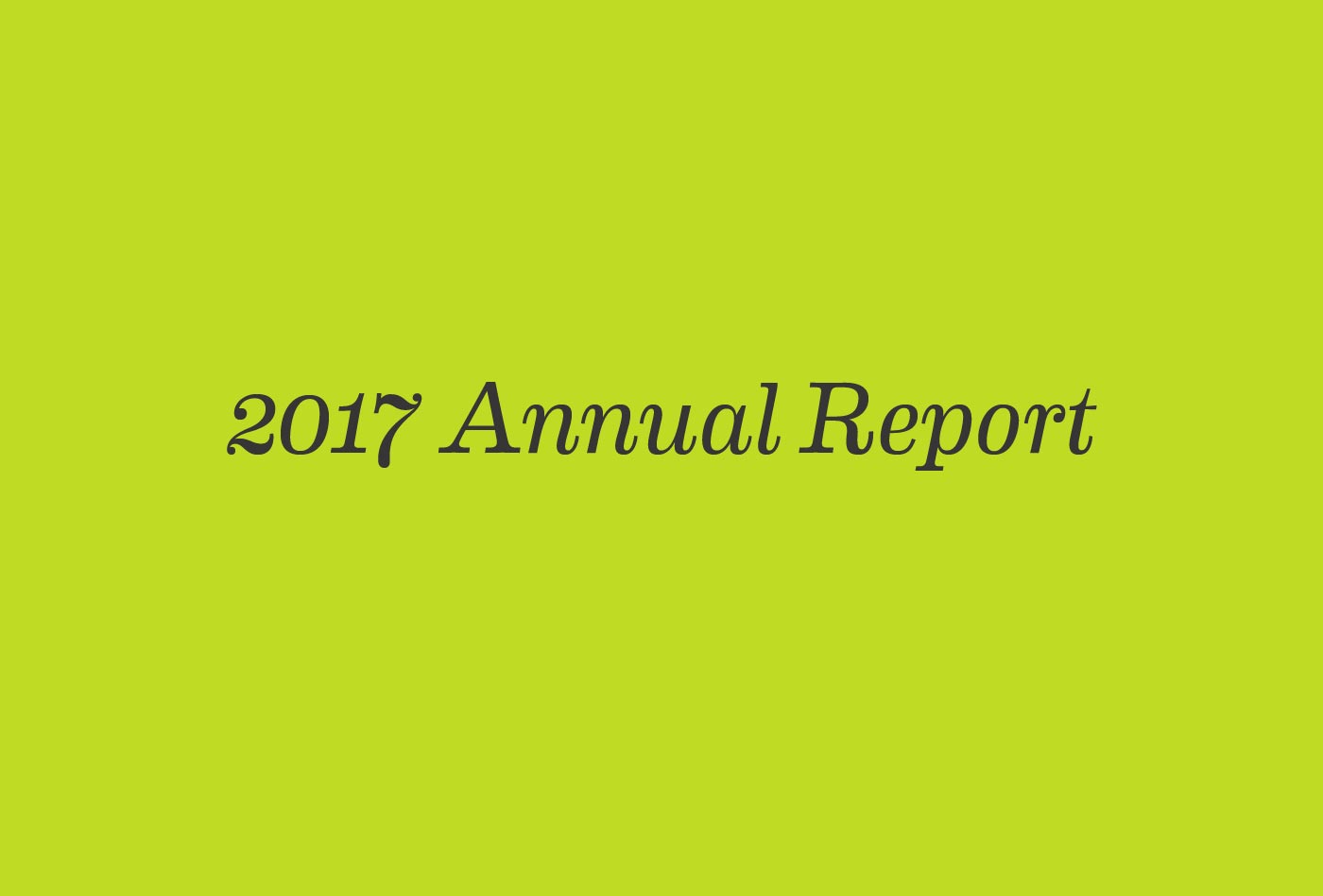
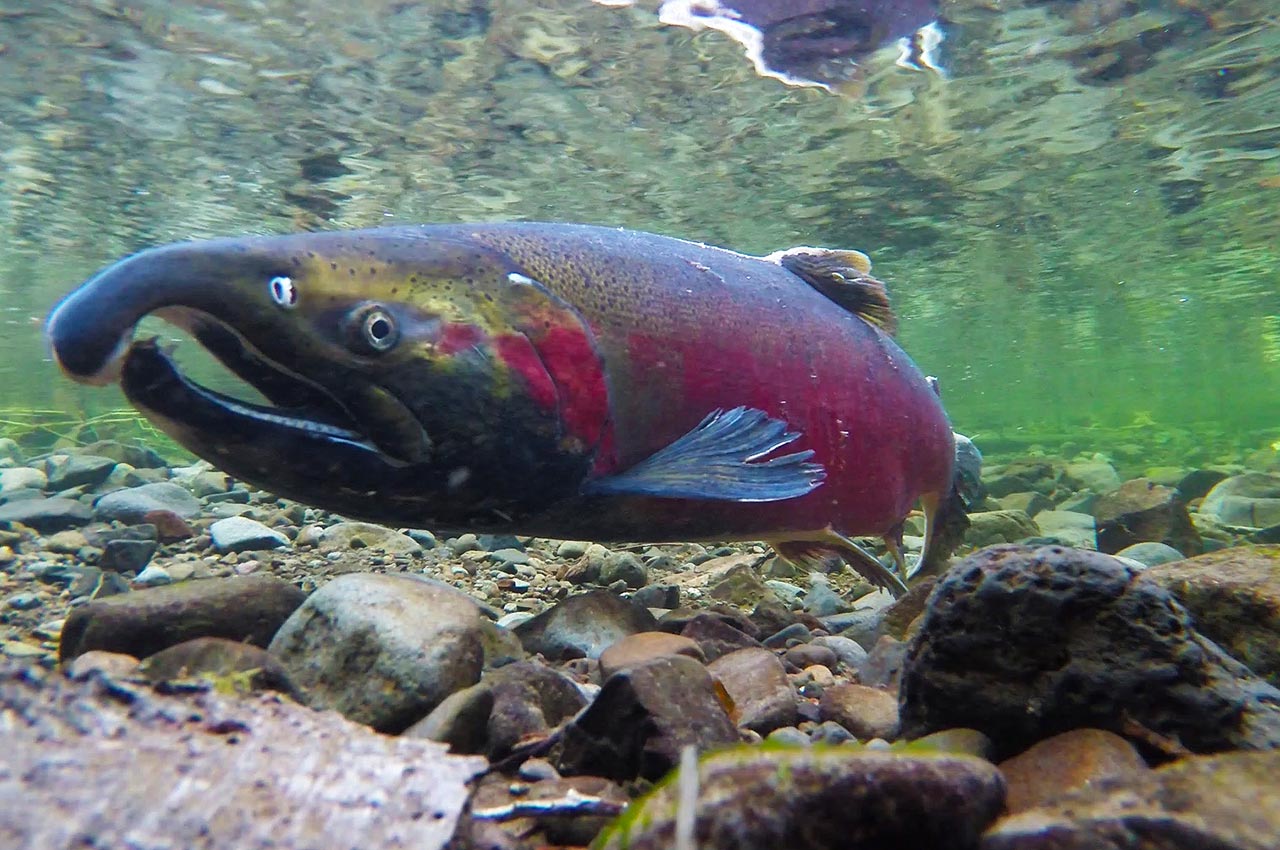
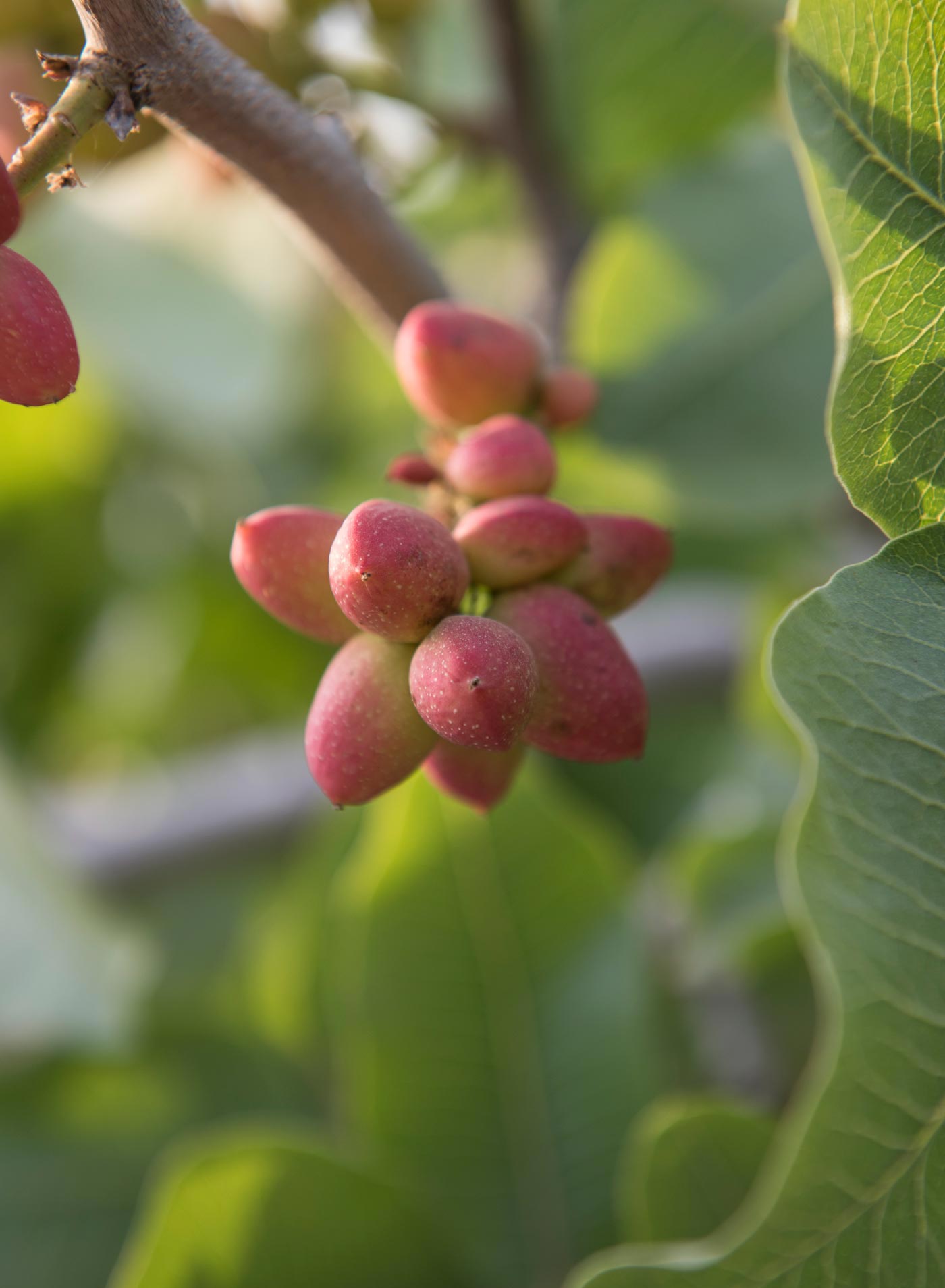












It’s more than holding on. It’s heeding yesterday’s lessons, working with today’s connections, and preparing for tomorrow’s vitality.
It’s what California needs to triumph over grave threats to our water security.
It’s what Sustainable Conservation is in the business of cultivating.
And it’s what YOU – our supporters and partners – supply us with as we work to transition our Golden State communities, farms, and wildlife from surviving to thriving.
Thank you.
2017 arrived in a torrent, with new political realities that laid bare our divided nation – and a spate of storms that broke California’s historic drought. Those sweeping changes affirmed Sustainable Conservation’s commitment: to solve our Golden State’s water challenges by uniting people with seemingly incompatible agendas and building strategies for change from common ground up.
We do that by rejecting conservation band-aids that work only for some in favor of cost-effective environmental remedies for all.
Your generosity catalyzes a host of resilience strategies to help meet the water needs of California’s environment and people now and into the future. Please enjoy the following stories of progress your contributions made possible in 2017.
With gratitude,

Ashley Boren
Executive Director
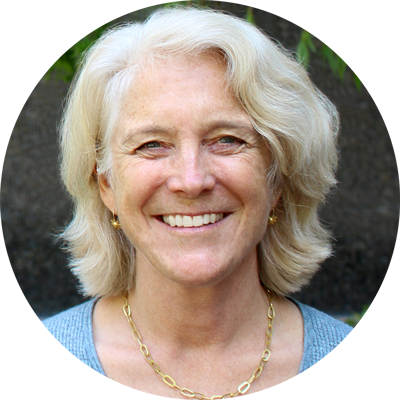
In 2017, our outreach propelled San Joaquin Valley farmers to make a sizable deposit to acutely depleted aquifers, replenishing our underground savings account for meeting future droughts. By taking storm flows onto their fields and allowing them to percolate down, our partners cached the equivalent of enough water to supply up to 14,000 California households for one year.
In 2017, our work with a growing cohort of Central Coast strawberry growers implemented farming practices that prevent salty intrusions from Monterey Bay and agricultural runoff from harming groundwater. These techniques help ensure clean drinking water runs from local taps and healthy food makes its way to our tables.
In 2017, our simplified permitting tools, developed with state and federal agencies, helped break ground on nearly 40 projects to restore habitat for fish and wildlife and safeguard water quality across the state. This work is critical to bringing imperiled species, like steelhead and the California red-legged frog, back from the brink.
In 2017, we installed a groundbreaking irrigation system that conserves water and employs cow manure as fertilizer on a new group of dairy farms. Promotion of this technology continues our long-standing partnership with California’s dairy industry, which produces 20% of U.S. milk, to protect clean water supplies and rural economies.
In 2017, our annual survey showed that only 3% of big-box retailers in California are selling invasive plants – down from 43% in 2014. That’s thanks to our work with the nursery industry to promote beautiful landscapes in which native flora and fauna can thrive.
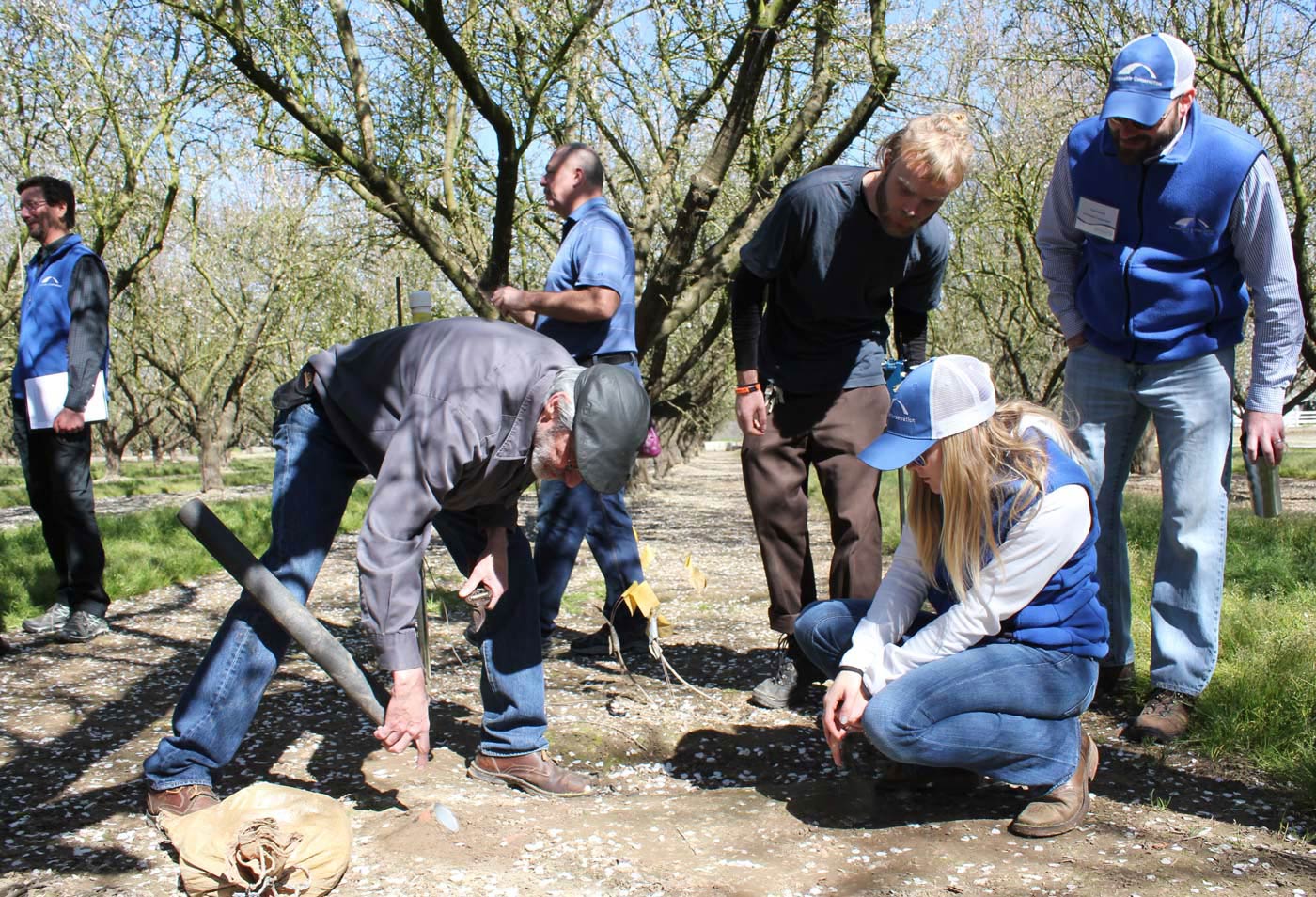
We all need water. Running from our taps, growing our food, flowing in streams to provide wildlife habitat: Sustainable Conservation works to protect these hydrating rhythms on which life depends. Read on for stories of the progress your contributions made possible in 2017.
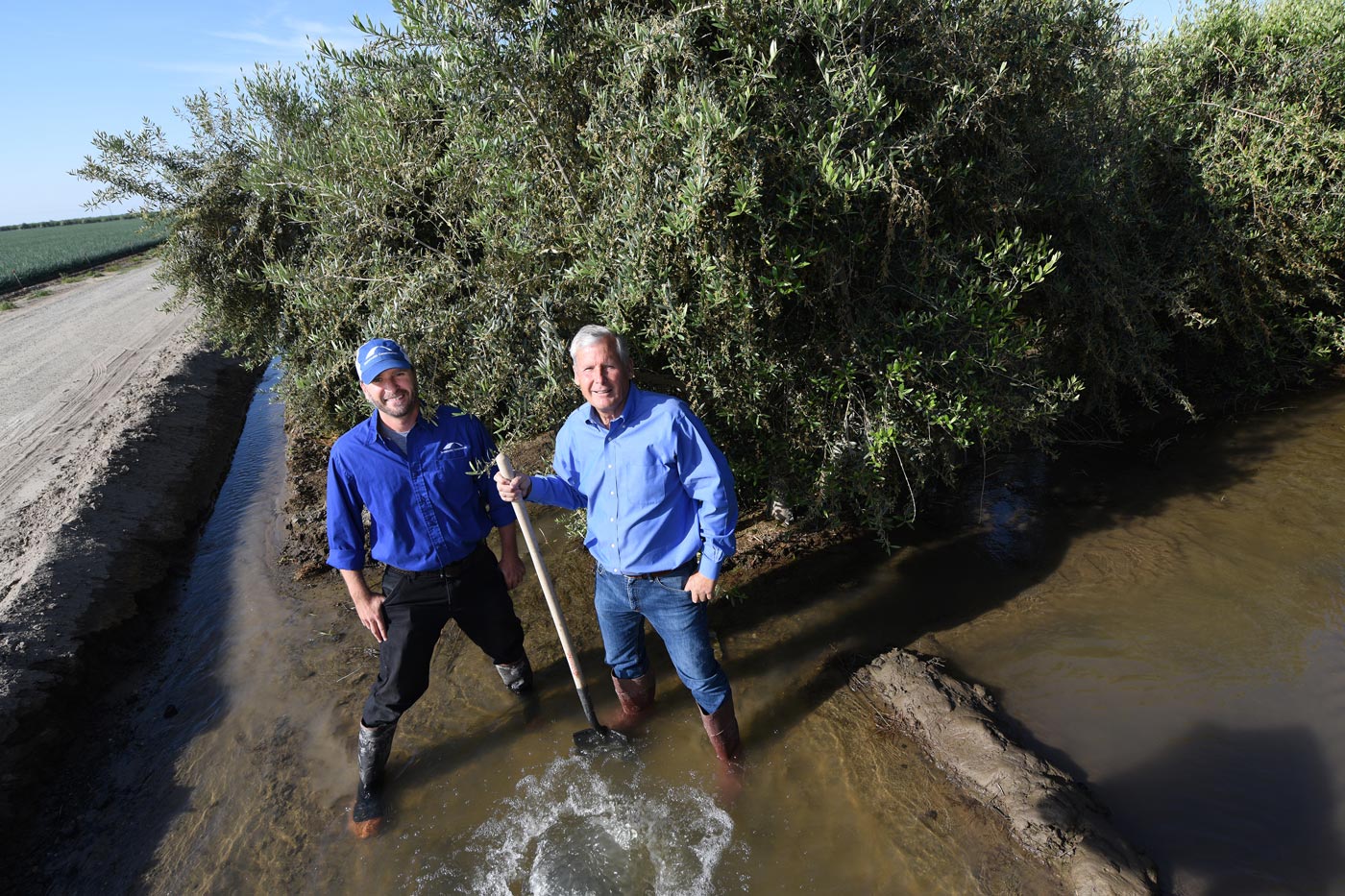
After five punishing years of drought, rain returned to California in 2017. Finally, the storms we had been waiting for, with the intensity climate change had predicted, were upon us. This was our moment to cache as much water as we could in our aquifers. Because even amid perceived years of plenty, our drops to drink and grow food with during dry times depend increasingly on subterranean savings afforded by the deluge.
Thanks to your support, Sustainable Conservation enacted our plan to channel and store the downpours. The method: routing floodwater that would otherwise be flushed out to the ocean onto farm fields and allowing it to seep down through soil and rock pores, replenishing groundwater basins deep in the earth. By adopting this cost-effective practice, farmers can help California manage our water supplies to better navigate our new weather norm of exceptionally arid periods punctuated with powerful storm years.
You enable Sustainable Conservation to develop environmental solutions in areas of California where the stakes are highest for getting it right – which is why we’re expanding on-farm groundwater recharge in the San Joaquin Valley. Working on water resilience in the agricultural heart of the state means we’re achieving benefits for all: reliable drinking water for rural communities, irrigation water for agricultural abundance that feeds the nation, flood protection for downstream towns, and healthy waterways that support fish and wildlife.
2017 progress your generosity made possible:
Refill Remedy
In partnership with individual farmers and two irrigation districts, Sustainable Conservation activated groundwater recharge on over 250 farm fields in the San Joaquin Valley. How much of a refill?
Well, while an “acre-foot” may sound like a reason to visit the podiatrist, it’s actually enough water to supply one-to-two California households for one year.
All told, our 2017 demonstration fields recharged over 7,000 acre-feet of groundwater, or the equivalent of enough to supply up to 14,000 families for 12 months.
Our workshops and irrigation district partnerships spurred over 100 farmers to offer up cropland growing everything from nuts and grains to stone fruit and citrus. On seven of these sites, we installed monitoring equipment to take a closer look at how quickly water infiltrated the soil, and whether or not the extra water posed any risks to crops. This information will be used to refine the guidance we can provide to additional farmers and water managers.
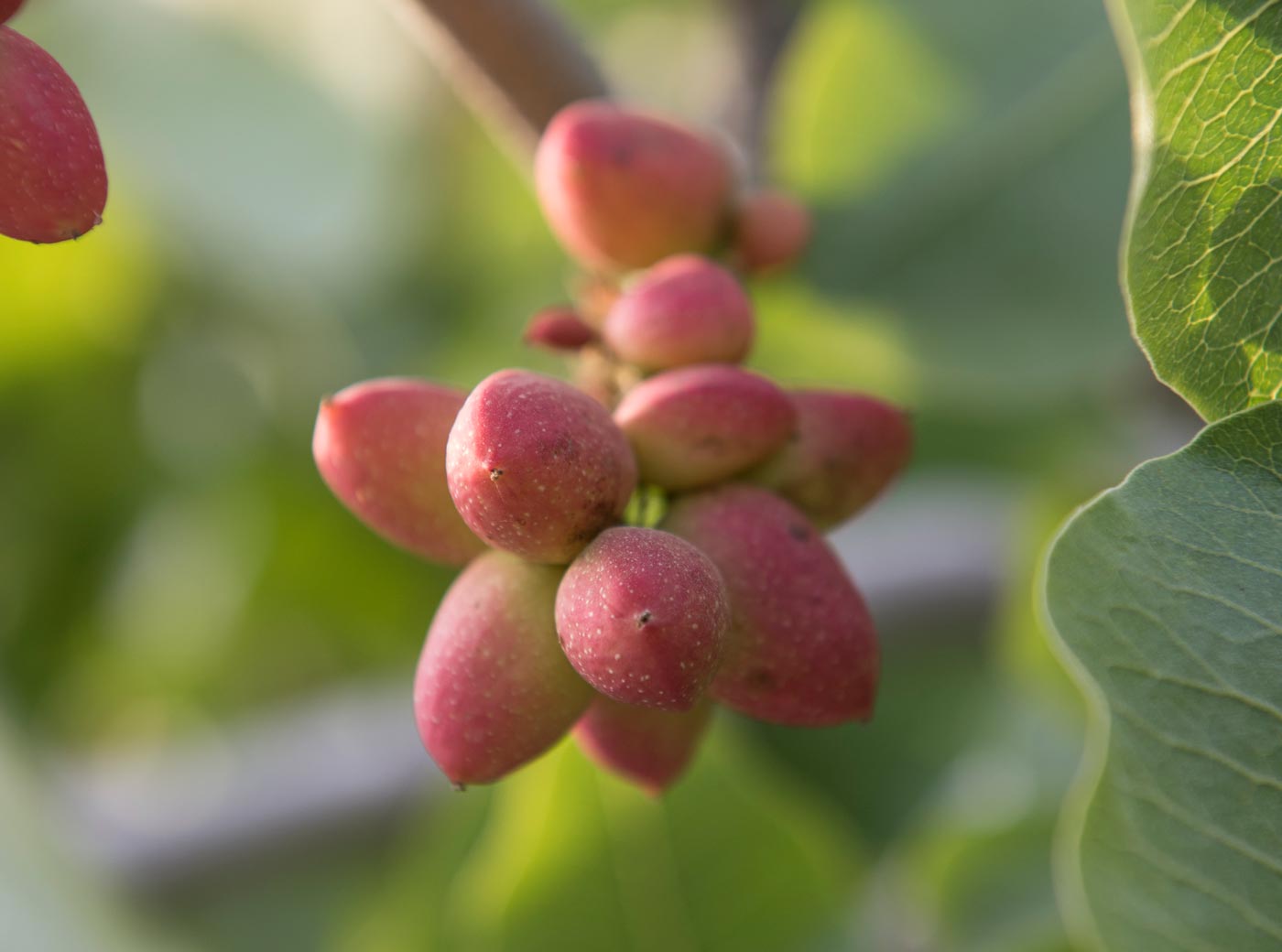
In addition to pistachios, crop diversity on our 2017 demonstration fields included almonds, grapes, cherries, peaches, oranges, wheat, corn, and squash.
2017’s record precipitation provided an opportunity to measure the baseline of recharge happening in the San Joaquin Valley and refine our strategy for boosting adoption. In partnership with the Water Policy Center at the Public Policy Institute of California (PPIC), we learned that the combined recharge activity in the Valley last year – including Sustainable Conservation-led efforts – raised local aquifer levels to a positive balance for the first time since 2011. We also discovered the barriers to even more recharge in the future, which Sustainable Conservation is already leading the charge to solve.
We’re grateful for our partnerships with the PPIC, farmers (including Terranova Ranch Vice President and General Manager Don Cameron, pictured at right in main photo with Sustainable Conservation Senior Project Manager Joe Choperena), water managers – and donors like YOU – who are helping move the needle on this essential water solution.
Mapping Tool Guides Regional Water Management
Our first-of-its-kind software tool, GRAT, helps water districts and managers maximize groundwater recharge in regions suffering the most from depleted aquifers.
Developed in partnership with the Earth Genome, our map-based Groundwater Recharge Assesment Tool (GRAT) determines optimal scenarios for recharge based on soil type, timing of water availability, and cost.
In 2017, with our partner the Earth Genome, we developed and tested GRAT, integrating guidance from the Tulare and Madera irrigation districts.
Network of Support for Improving Aquifer Health
As a result of Sustainable Conservation’s projects and outreach our donors made possible in 2017, influential allies are now promoting groundwater recharge as a strategy to protect and enhance local aquifers. These include the Almond Board of California, whose nearly 7,000 growers oversee half a million acres of land suitable for recharge, and major San Joaquin Valley irrigation districts that service millions of acres of recharge-ready farmland. We’re also partnering with state agencies like the Department of Water Resources and Department of Food and Agriculture, whose help is vital in maximizing groundwater replenishment efforts statewide.
Collaboration: it’s the best way we know to make a lasting difference.
Key Partners
2017 Media Coverage
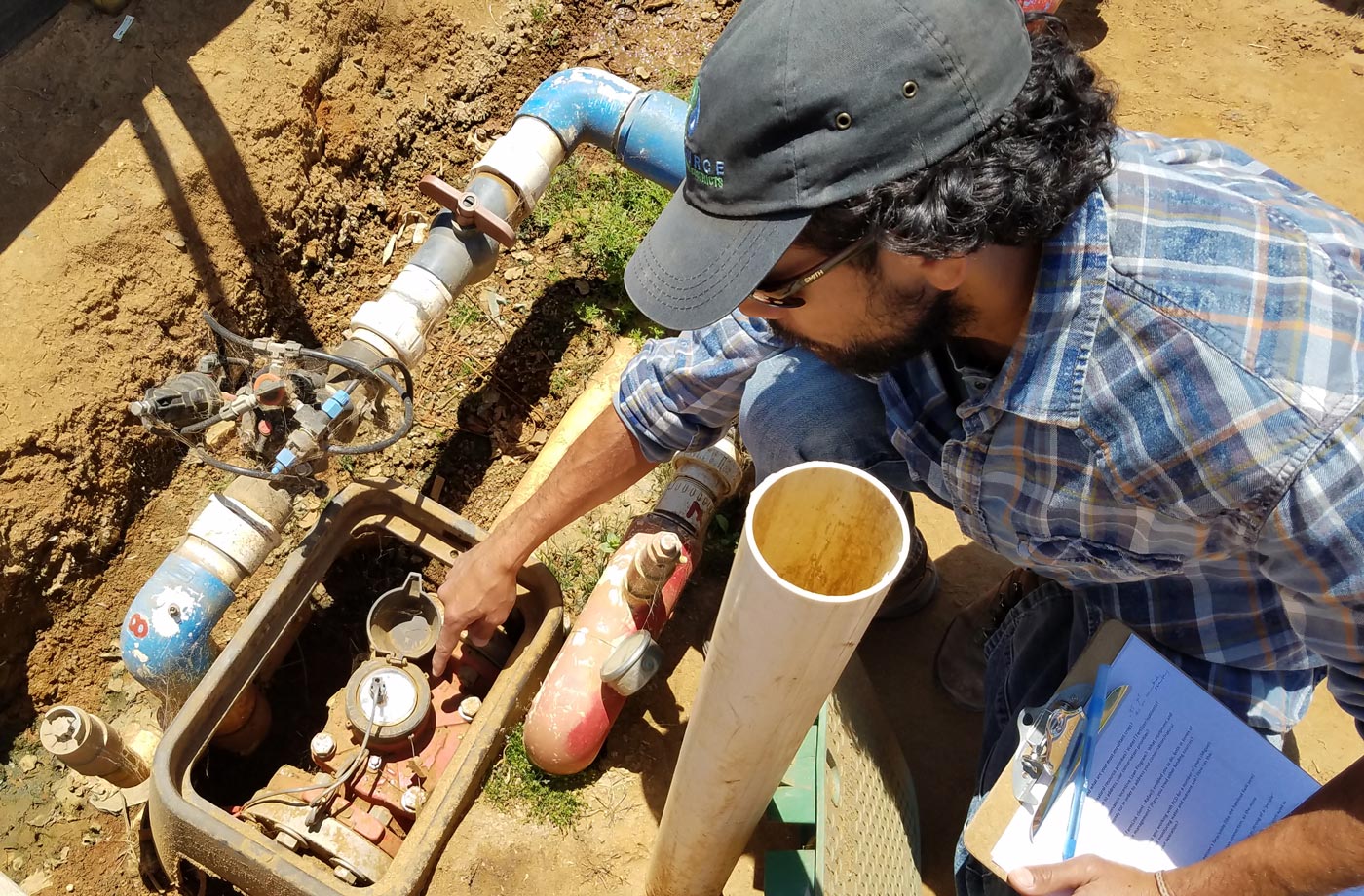
California’s Central Coast is home to a wonderland of berries and lettuces, field upon field of healthy produce. Once plucked from the soil, those crisp heads of romaine and juicy strawberries make their way to many of our shopping carts. We’re lucky to have this bounty at our fingertips, but farms and communities in the region known as the “salad bowl of the world” are in jeopardy.
That’s due to the state of area aquifers, which have been compromised by years of over-pumping and imprecise fertilizer application. Your generosity supports a solution that addresses both.
The Pajaro and Salinas valleys, ground zero for Central Coast farming, are imperiled for two reasons. First, groundwater is the primary source of hydration for people and crops. When those underground sources are sucked dry of fresh water, the resulting vacuum draws in seawater from nearby Monterey Bay and renders pumped water unfit for drinking or irrigating. Second, when fertilizer isn’t measured to accurately meet crop needs, the excess can pass down through farm fields to taint groundwater basins below.
With your help, Sustainable Conservation unites a diverse group of partners to shepherd coastal aquifers back to health. Together, we work with farmers to encourage them to track water and nutrient use. By connecting growers with money-saving tools that make it easier to conserve water and improve water quality, we’re sowing seeds of resilience for Central Coast communities and local food production that nourishes so many of us.
2017 progress your generosity made possible:
Protecting Water and Bank Accounts
How do strawberry farmers know when their plants need water? In the past, plunging a hand into the soil to feel for moisture was considered a sufficient diagnostic. While there’s value in that tactile connection, we now have the means to take more accurate measurements. Technology, including in-field sensors tied to smart phone alerts, can bring berries to market with precisely calibrated amounts of water and fertilizer – and fewer dollars expended.
Growers who have adopted Sustainable Conservation’s “just right” protocols for tending their fields have seen great results. Since 2013, our partners at the Resource Conservation District of Santa Cruz County have been collecting data on a growing cohort of strawberry farms.
Our 2017 field results from nearly 300 acres averaged a remarkable 94% for water-use efficiency – down from the original baseline of 136%.
100% is the optimal ratio for efficiency – meaning plants are getting no more than exactly what they need – and we’re thrilled that crop yields on these demonstration sites have remained healthy with even less.
Sustainable Conservation’s collaboration with Driscoll’s, a major grower and purchaser of coastal fruit whose berries you’ll recognize from your grocery store, is helping to spur on greater adoption of these farming methods that simultaneously conserve fresh water and keep seawater and fertilizer pollution at bay. Our partnership with the Stewardship Index for Specialty Crops opened the farm gates for testing our water efficiency metric with lettuce growers in the Salinas Valley as well as introducing it to national food buyers and retailers.
With the continued support of our donors and partners, we can grow our program to give more Central Coast communities a chance at reviving and protecting their water lifelines. People and farms in other areas need help too, and we’re poised to expand our efforts in Monterey County and other coastal valleys.
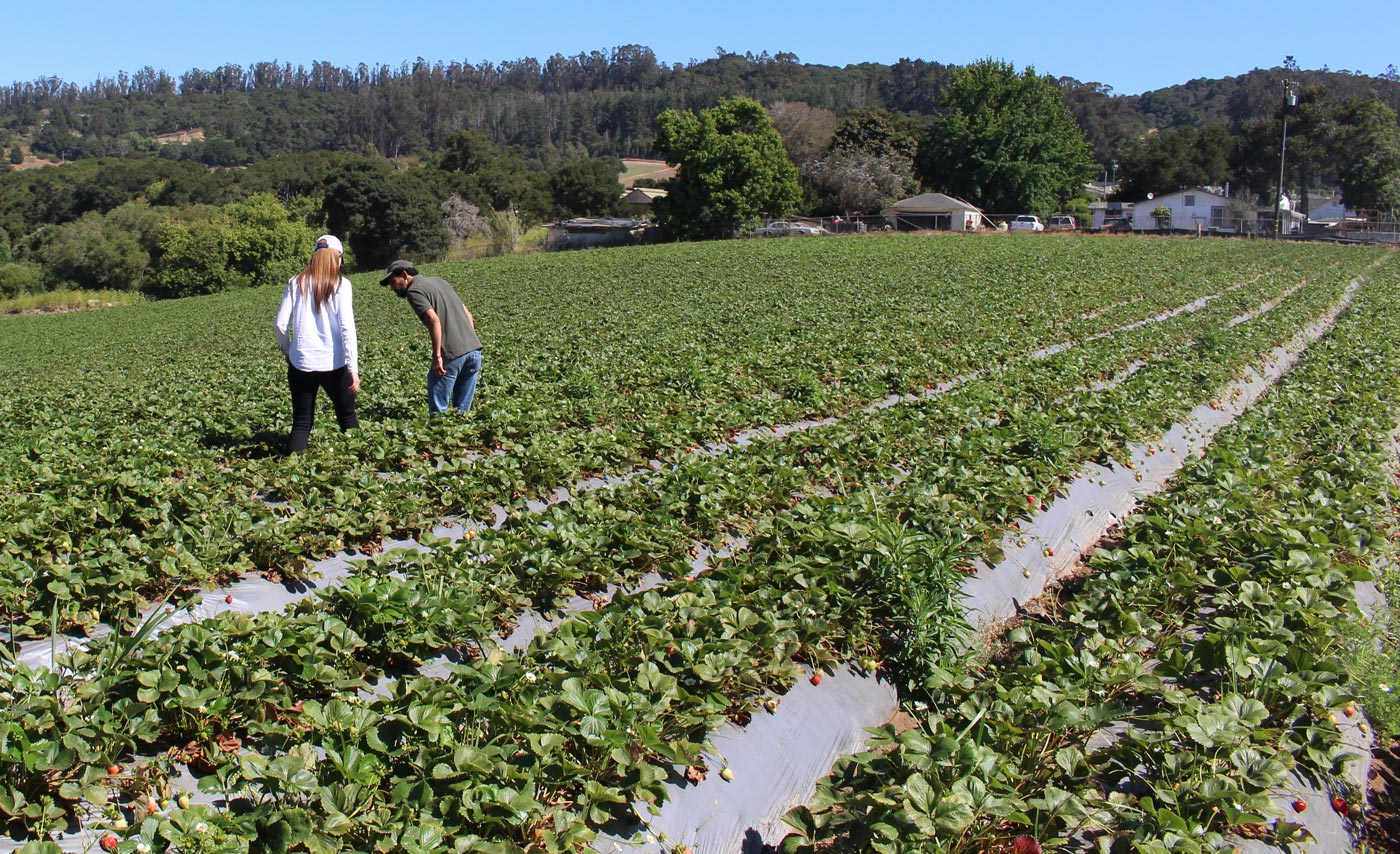
Partners in the field: Sustainable Conservation’s Senior Manager of Conservation Incentives Kelli McCune and Resource Conservation District of Santa Cruz County Program Manager Sacha Lozano (also pictured in main photo).
Financial Incentives to Reward Environmental Performance
As you know, one of the central tenets of Sustainable Conservation’s environmental solutions is economic viability. On-farm conservation practices take money to implement, and we need to ease the transition, especially for smaller farms. Figuring out that piece will accelerate adoption on more of the 30,000 food-growing acres in the Pajaro Valley alone.
That’s why we’re thrilled to announce our partnership with California FarmLink, an agricultural lender that supports beginning, immigrant, and other underserved farmers. Together with the Resource Conservation District of Santa Cruz County, our three organizations devised a loan rebate program that California FarmLink will administer to connect growers with crucial funds. These loans will help outfit farms with equipment that guides water and nutrient application without wasting a single drop.
The farmers who have signed up for the 2018 growing season will receive a bonus for establishing a new efficiency baseline, and a rebate on interest paid during their loan period if they show improved water and fertilizer savings. The experiences and outcomes of this inaugural group will be key to increasing adoption of the program.
With the initial investment covered, farmers can more readily reap long-term benefits for their communities and businesses: more – and cleaner – water in the ground for drinking and irrigating AND more money in the bank.
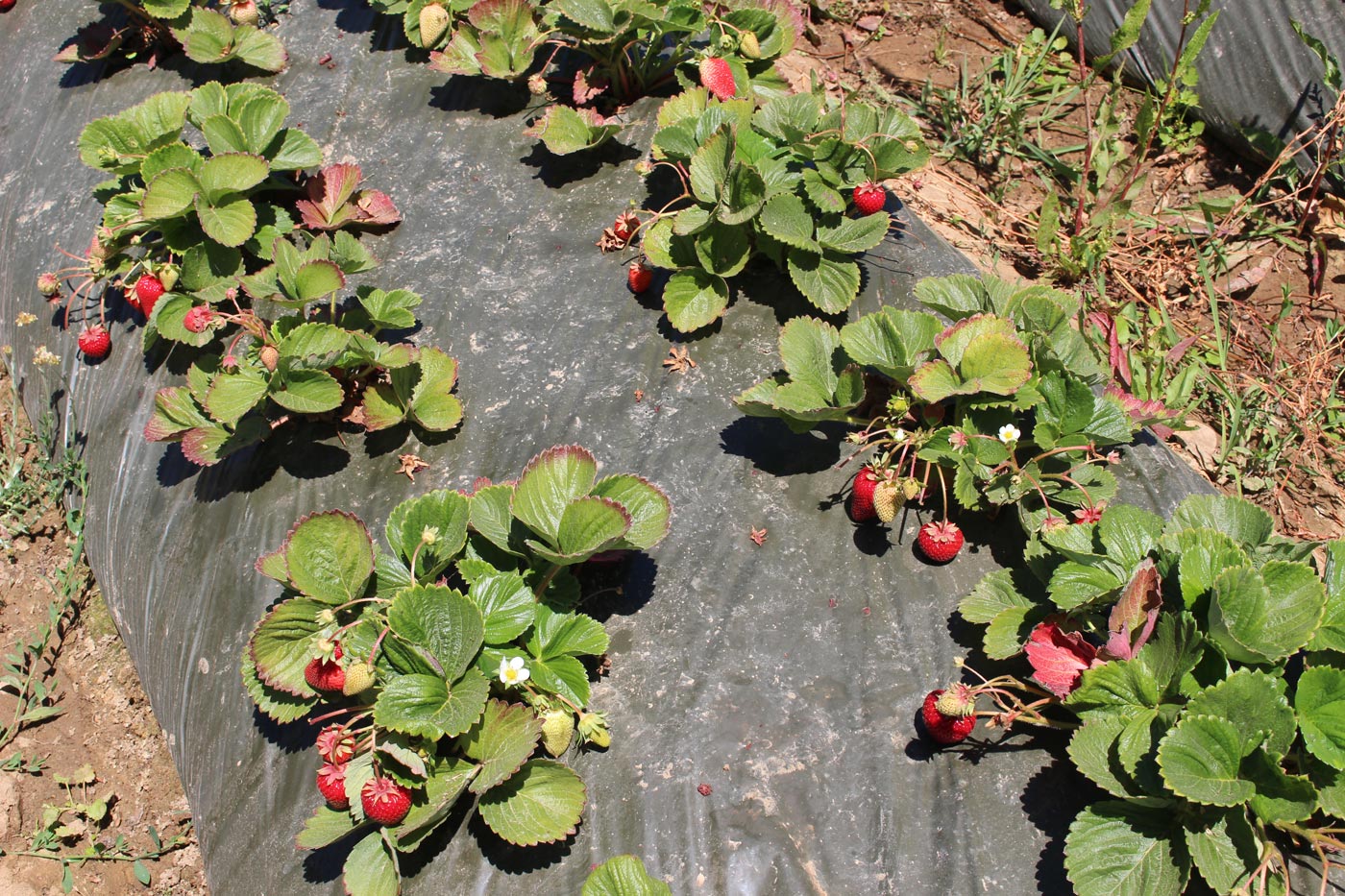
Strawberries growing toward harvest on one of the Central Coast farms participating in a loan rebate program we developed with California FarmLink and the Resource Conservation District of Santa Cruz County.
Key Partners
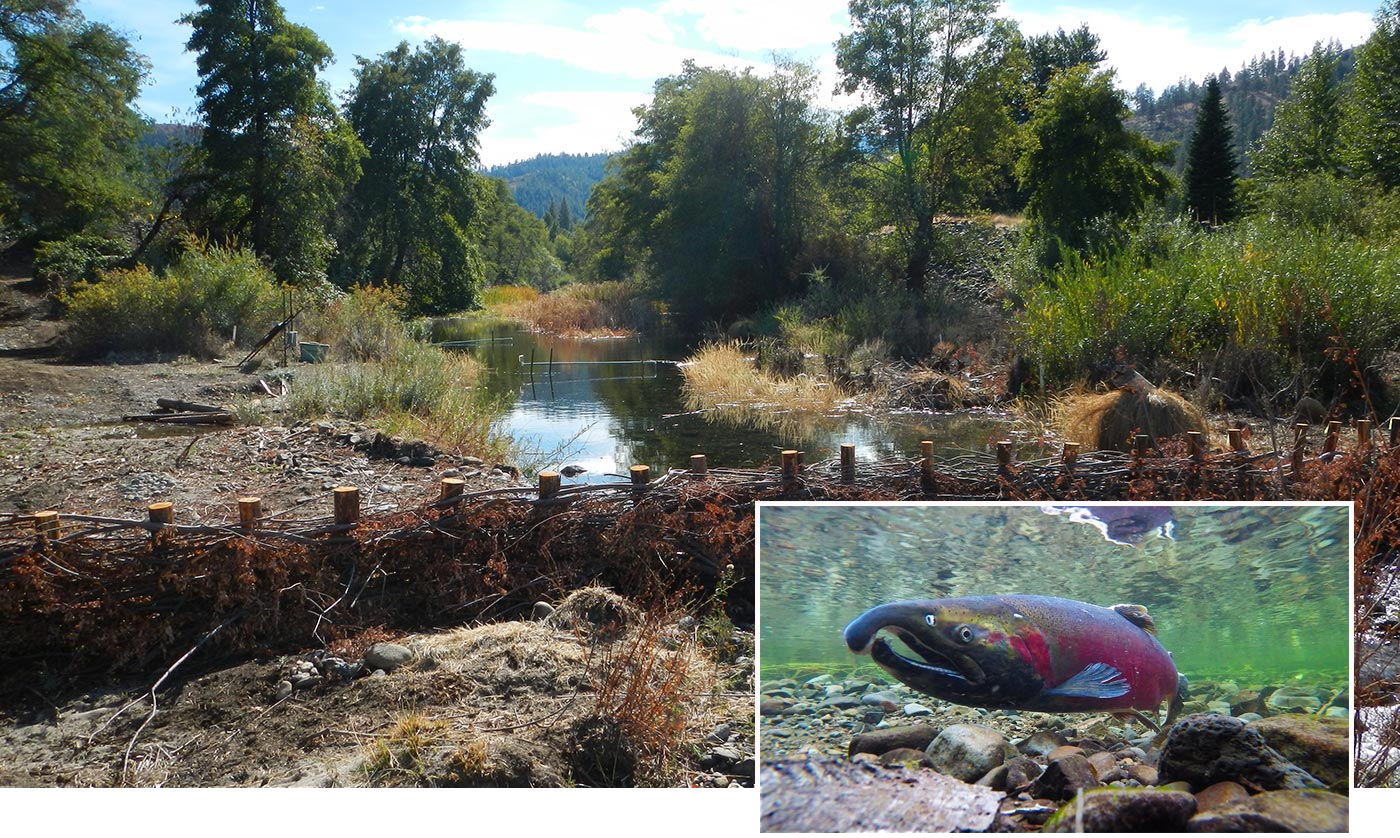
California’s waterways and wildlife are in urgent need of our attention. Native fish and birds rely on rivers and streams, but many of their lifelines have been polluted and stripped of neighboring forests that provide shade and shelter. As a result, hundreds of our Golden State’s iconic species are on the path to extinction.
The good news? There’s a great deal that can be done to reverse the harm, while also supporting economic endeavors on working landscapes.
Landowners – including public land managers such as State Parks and land trusts – often want to tackle projects that will create habitat and improve water quality on their properties, but regulatory approval is an onerous, expensive, and sometimes deal-breaking process.
Sustainable Conservation partners with government, land managers, and others to simplify permitting while upholding strict, protective standards for the environment. Our strategy saves the time and resources of many individuals and groups, including state and federal agencies and project planners.
For restoration practitioners, they get to spend more time doing what they love and what our Golden State so desperately needs rather than pursuing a protracted approval process.
It’s a win for our land and waterways – and the people, fish, and wildlife who depend on them.
“Today’s conservation work MUST keep up with the scale and pace of threats facing our natural resources. Sustainable Conservation understands that predicament and is doing something about it.”
- Kellyx Nelson, Executive Director, San Mateo County Resource Conservation District
2017 PROGRESS YOUR GENEROSITY MADE POSSIBLE:
Adding Up: Projects to the Rescue
Sustainable Conservation’s simplified permitting tools helped break ground on nearly 40 restoration projects in 2017, with many more already underway or in the pipeline for 2018.
To date, we’re pleased to report the following:
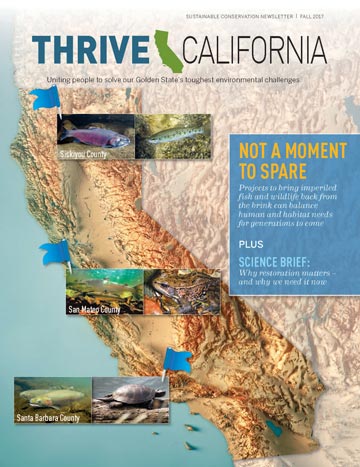
Don’t miss an issue of Thrive California, Sustainable Conservation’s bi-annual newsletter. Subscribe here.
While these numbers are impressive, the broad spectrum of restoration projects developing in every region of California is truly exciting. A little about some of the projects that utilized our simplified permits in 2017:
Side channels help young salmon by providing refuge from the fast river flows they have to navigate on long journeys to and from their upstream spawning grounds. Video courtesy of Harmony Gugino, Project Manager, Western Shasta Resource Conservation District.
Millions More for Wildlife
When it comes to bringing imperiled plants and animals back from the brink, every dollar and minute counts.
Sustainable Conservation’s 2017 analysis shows that up to $125 million could be saved over a 10-year period in California and put to better use through simplified permitting for restoration projects. This potential motivates our partnerships with all three state and all three federal agencies with jurisdiction to make it faster, easier, and much less expensive to complete projects that restore streams and rebuild habitat.
Last year, we fully turned our attention to the remaining two federal agencies with whom we need to develop simplified permitting to achieve full state coverage: the U.S. Army Corps of Engineers and the U.S. Fish and Wildlife Service.
Thanks to you, we have made remarkable progress toward lowering barriers to pivotal habitat improvement and enhancement. With your continued help, we can finish the process – ensuring the whole of our Golden State can more readily lend a helping hand to waterways and wildlife.
Key Partners
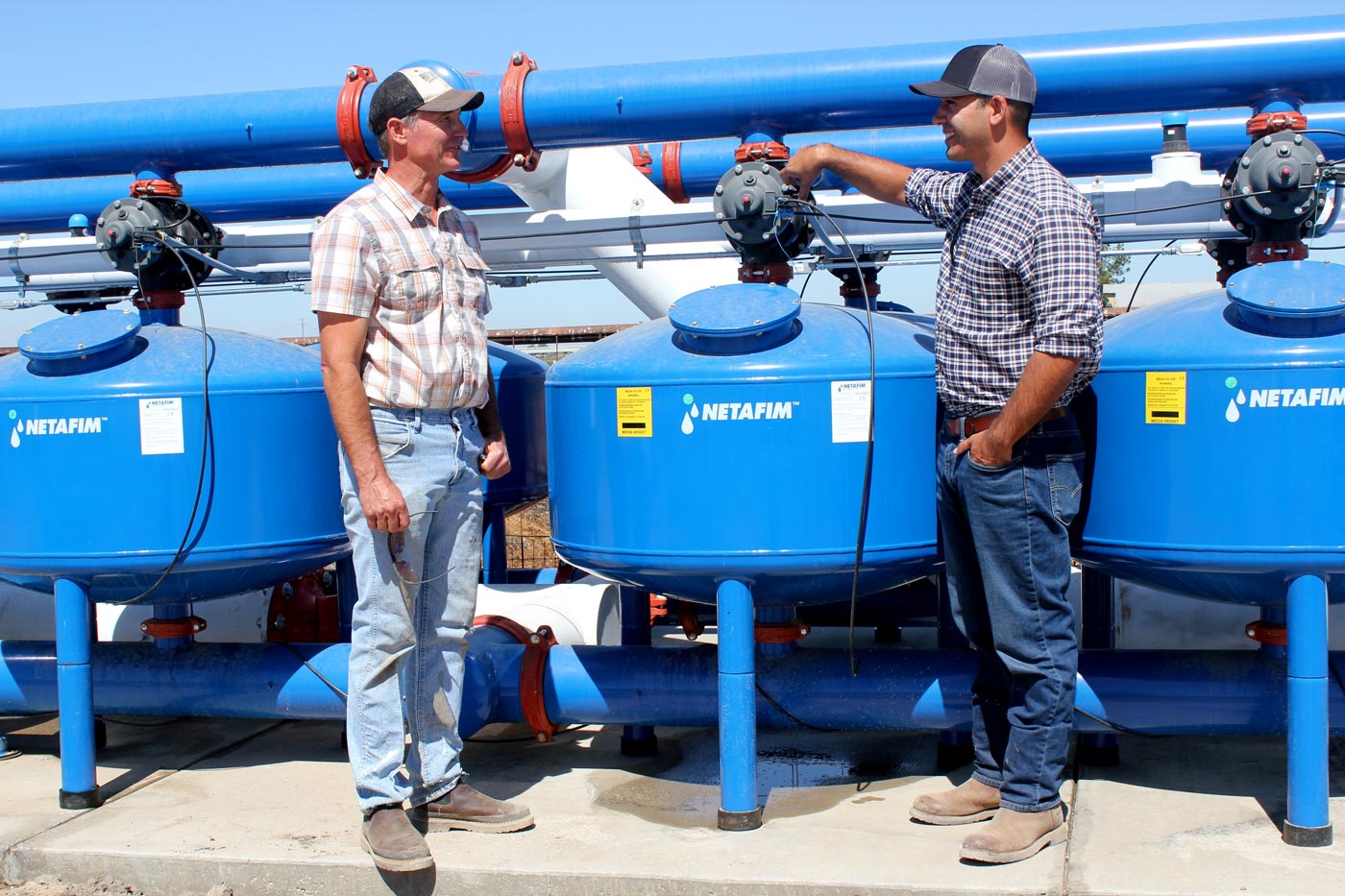
California leads the nation in milk production. With that comes fortifying cheese and yogurt, 50,000 Golden State jobs – and a mountain of manure.
If California is home to 1.8 million cows and each animal produces around 120 pounds of waste per day… well, you can do the math. That’s a whole lot of poop that dairies need to manage in order to prevent groundwater pollution and offset harmful methane emissions.
“Kern County’s groundwater is critically low, so finding new, precision technologies that help us save water and keep nitrates out of our aquifer while using our manure resources on-farm has the potential to make a big difference.”
- Guntar Vecpuisis, West Star Dairy
Dairy farmers and their neighbors also contend with threats to water supplies due to extreme climate shifts, including predicted droughts even worse than the landmark dry spell we most recently endured. The health of local communities and agriculture hangs in the balance.
For over 15 years, Sustainable Conservation has worked with Central Valley dairies to protect water and air quality while maintaining business viability. The technologies we’ve developed together enable farmers to grow feed crops with nutrients found right on the farm – offering up a double dose of resilience by not only avoiding the poop hitting the fan but turning it into “black gold.”
2017 PROGRESS YOUR GENEROSITY MADE POSSIBLE:
Mastering Manure Management for Clean Water
Think of manure as free and readily available natural fertilizer. Too much of it is problematic, but the right doses support crops that keep cows happy and healthy. Using a mixture of manure and water in underground drip irrigation tape pinpoints the ratio, saving farmers money on synthetic fertilizer and keeping nitrates out of groundwater.
We’ve pioneered a system with Netafim USA, a world leader in irrigation equipment, that targets water and nutrients directly to crop root zones in monitored quantities, ensuring plants get exactly what they need to flourish, and no more to leach into groundwater below.
Promising returns from our pilot project: growing 15% more crop with 50% less water and a 95% increase in nitrogen-use efficiency (that is, more crop per pound of nitrogen).
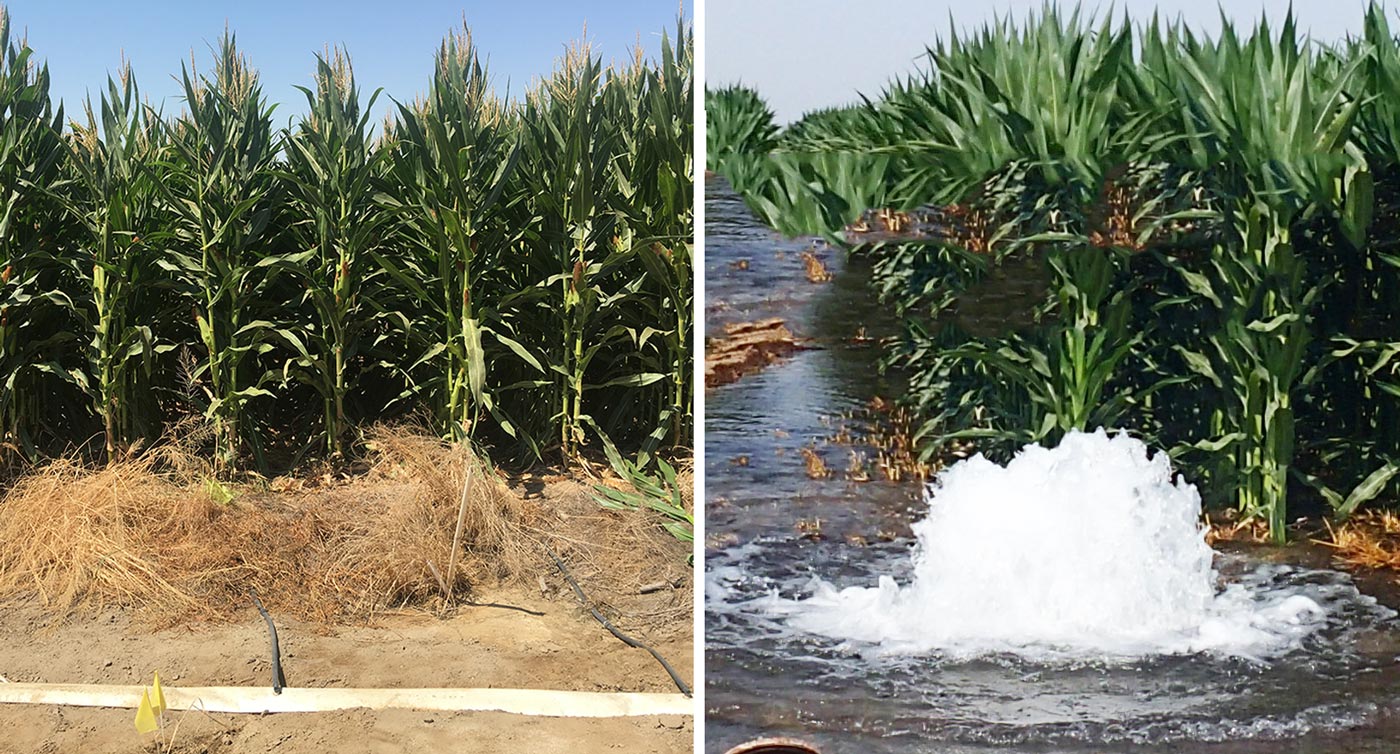
Water savings made visible: our pioneering system, which precisely applies water and manure-based fertilizer via drip irrigation (LEFT), vs. flood irrigation (RIGHT).
Last year, with your support and a grant from the U.S. Department of Agriculture*, we expanded our demonstration sites to three dairies covering more than 200 acres in the heart of the San Joaquin Valley. Doing so united a diverse group of leaders – agricultural, government, academic, business, and environmental – around shared conservation goals. We installed systems on all sites, including McRee Dairy (owner Mike McRee pictured at left in main photo with Sustainable Conservation Project Manager John Cardoza), and began monitoring corn and wheat grown with manure-based fertilizer delivered via subterranean tubing alongside control fields using flood irrigation. The visuals alone – precisely applied drips of water and nitrogen versus pools of standing water on fields – give you an idea of the water and nutrient savings achieved by the new system.
Given climate and allocation uncertainties, dairy farmers are looking for ways to continue producing milk using less water. Shifting irrigation practices offers the biggest opportunity for savings. If our pioneering system is adopted on just 25% of California dairies' corn silage (cow feed) acreage, dairies could grow up to 15% more corn with much less water. How much less? Enough water to fill 46,000 Olympic-size swimming pools every year. Combined with significant reductions in nitrate leaching and greenhouse gas emissions afforded by the system, we’re talking real impact in California.
Compost: Sharing the Wealth
When it comes to manure, dairies have too much of a good thing. What if they could share the wealth with other areas of the Central Valley?
Compost is a low-tech, economically sensible option for reducing manure concentration to protect drinking water and air quality. Composting dairy manure creates a high-quality soil amendment, kills pathogens, reduces nitrates that threaten water quality, and produces a more compact product that can be easily transported for use on food crops across California.
Sustainable Conservation leads a statewide coalition of agency and industry partners to inform smart regulations for dairy composting practices. Based on the findings of our 2017 report, we’re educating state lawmakers about the potential of composting manure to reduce farming’s water and climate impacts – and to keep dairies in California so they can be part of environmental solutions here at home.
Key Partners
2017 Media Coverage
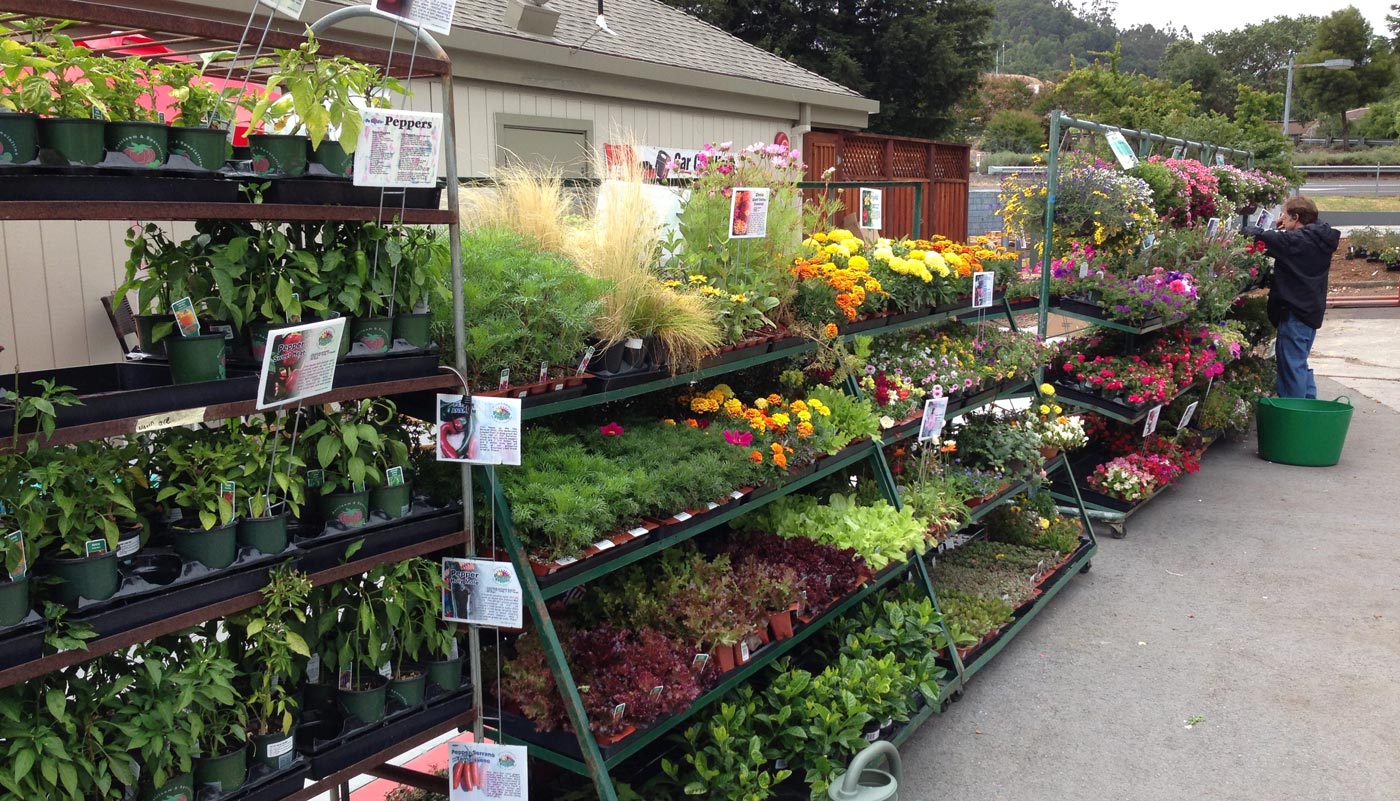
California is one of the world’s great ecological treasures. We share our Golden State with an astounding array of plants and animals, many of which are found nowhere else on Earth. In flora alone, our home hosts more than any other state in the U.S.
Plants help us gauge the health of our wild lands. Many of them feed and shelter wildlife, provide shade and opportunity for reflection, and underpin and connect our ecosystems.
But some threaten California’s glorious abundance by crowding out native species and increasing fire and flood danger. Nearly 50% of invasive plants in California were introduced for ornamental purposes – meaning an innocent seedling purchase at your local nursery could be bad news for the landscapes beyond your yard.
That’s why Sustainable Conservation’s PlantRight initiative unites a diverse alliance of horticultural industry leaders to keep invasive plants off store shelves and out of the supply chain entirely. Our partners include “big-box” and independent garden centers, ornamental growers, nursery and landscape trade associations, and plant scientists – all of whom are committed to promoting non-invasive plants and preventing invasive plant threats from taking root.
Together, we’re protecting the irreplaceable biodiversity that makes California such a special place to live.
2017 PROGRESS YOUR GENEROSITY MADE POSSIBLE:
Big-Box Breakthrough
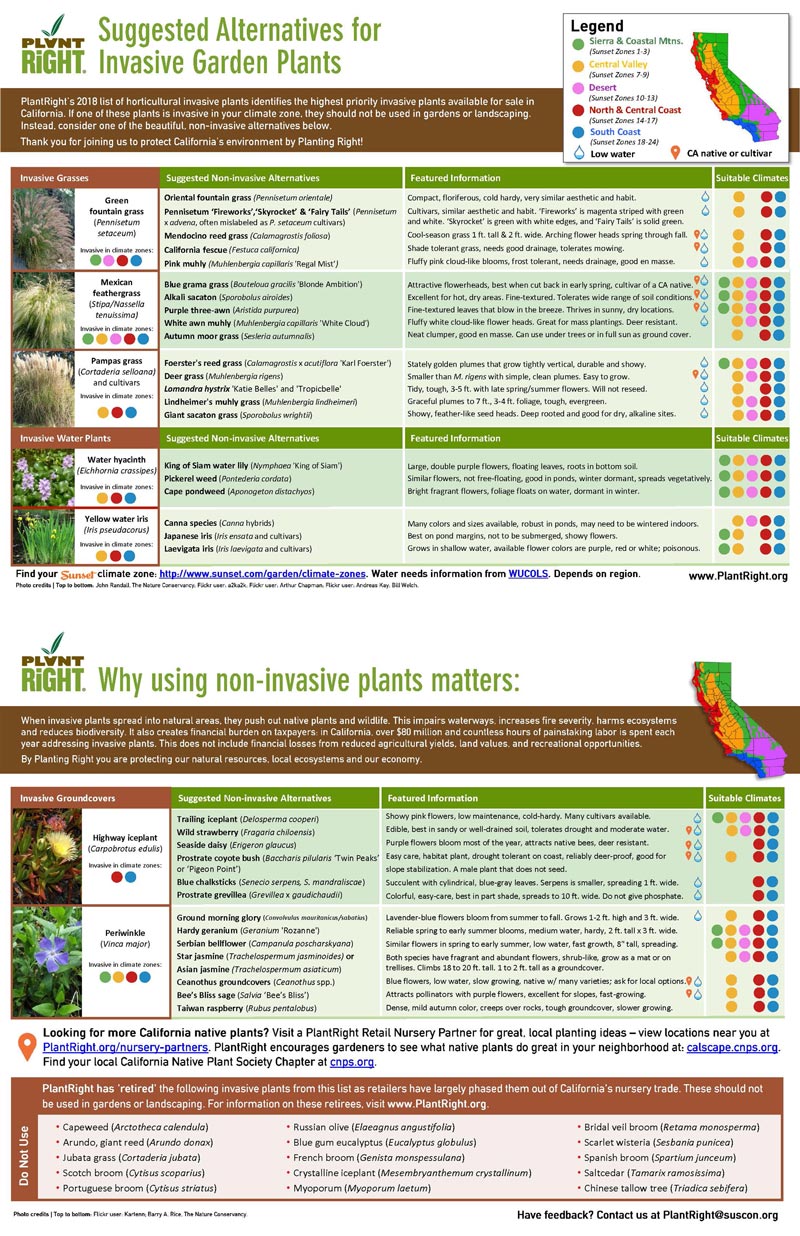 Big-box stores are responsible for approximately 70% of all retail plant sales in California. Accordingly, joining forces with these influential retailers to voluntarily remove invasive plants from their inventory makes a big difference. PlantRight’s list takes the guesswork out of answering What’s invasive? and helps our valued retail partners provide even better choices for customers in search of environmentally-friendly plants.
Big-box stores are responsible for approximately 70% of all retail plant sales in California. Accordingly, joining forces with these influential retailers to voluntarily remove invasive plants from their inventory makes a big difference. PlantRight’s list takes the guesswork out of answering What’s invasive? and helps our valued retail partners provide even better choices for customers in search of environmentally-friendly plants.
Each spring, to track the progress of PlantRight’s outreach and guide future efforts, we survey hundreds of garden centers across the state.
In 2017, the sale of invasive plants at big-box stores dropped down to a mere 3% – continuing the sharp decline we’ve seen since 2014’s 43%.
PlantRight’s retail partners include stores large and small, from California locations of The Home Depot, Lowe’s, and Orchard Supply Hardware, to regional chains like Sloat Garden Center, and veteran independents such as Roger’s Gardens, The Garden Company, and Yamagami’s.
Knowing Before Growing

While highway iceplant’s fuschia blooms may distract us with their beauty, the troublesome succulent’s stranglehold on mile after mile of coastal real estate threatens imperiled shore birds like the Western snowy plover.
Keeping California free of future plant invasions requires prevention. How we do that here can benefit landscapes and vulnerable wildlife all over the U.S.
PlantRight’s Plant Risk Evaluator (PRE™) helps the horticultural trade predict, with 95% accuracy, whether or not a plant poses a high invasive risk in a specific region – and prevent bringing to market those plants identified as problematic.
Through a 2017 Farm Bill grant, four botanic gardens across the nation commenced deployment of PRE. Each garden assessed 50 landscape plants of economic interest or contention within their region, for a total of 200 assessments. The year-long project significantly advanced the PRE tool and database – enhancing ease-of-use, adding more collaboration capabilities, growing the database beyond California-based inquiries (nearly 500 assessments and growing), and increasing national awareness of this new decision support tool for the nursery and landscape trade.
When we unite horticultural leaders to prevent invasive plants from being sold in the first place, we support thriving native habitats and landscapes.
Key Partners
Bonus Resource
Beyond Drought-Tolerant: A California Low-Water Gardening Guide from Sustainable Conservation

The source of Sustainable Conservation’s resilience as we work to build the same for our Golden State? YOU – our donors and partners. Thank you for uniting with us to solve California’s toughest environmental challenges.
Donor list available to our supporters upon request.
7 Day Nursery
Agricultural Council of California
Almond Board of California
Alnus Ecological, Inc.
Altman Plants
American Public Gardens Association
American River Conservancy
American Rivers
American Society of Landscape Architects - Northern California Chapter
AmericanHort
Association of California Water Agencies
Association of Professional Landscape Designers, California Chapter
Atlanta Botanical Garden
Audubon California
Bachand & Associates
Back to Natives Nursery
Bailey Nurseries
Ball Horticultural
Corey Barnes, San Francisco Botanical Garden
Joe & Renee Barroso Dairy
Belmont Nursery
Bidart Dairy
Big Oak Nursery
Biofiltro USA Inc.
Nick Blom
Botanical Research Institute of Texas
Frank S. Brown Company
Cachuma Operations Maintenance Board
Cachuma Resource Conservation District
CalBio
CalCAN
CalEPA
California Ag Solutions
California Air Resources Board
California Association of Nurseries and Garden Centers
California Association of Resource Conservation Districts
California Coastal Commission
California Dairy Campaign
California Dairy Quality Assurance Program
California Department of Conservation
California Department of Fish and Wildlife
California Department of Food and Agriculture
California Department of Forestry and Fire Protection
California Farm Bureau Federation
California Invasive Plant Council
California Landscape Contractors Association
California Native Plant Society
California Natural Resources Agency
California Roundtable on Agriculture and the Environment
California Roundtable on Water and Food Supply
California State Coastal Conservancy
California State Parks Department
California State Water Resources Control Board
California Sustainable Winegrowing Alliance
California Trout
California Water Action Collaborative
California Water Efficiency Partnership
California Water Foundation
Californians Against Waste
CalRecycle
Carbon Cycle Institute
Central Coast Salmon Enhancement
Central Coast Wetlands Group
Central Valley Flood Protection Board
Ceres
Chicago Botanic Garden
Chino Basin Water Conservation District
City Farmers Nursery
City of Santa Monica, Office of Sustainability and the Environment
Clover Prairie Farms
Coastal San Luis Resource Conservation District
Community Alliance with Family Farmers
Al Costa
Cosumnes Coalition
Dairy Cares
De Jager Dairy
Delta Conservancy
Delta Stewardship Council
Driscoll’s
Earth Genome
East Bay Municipal Utility District
Ecoconsult
Edgar & Associates
Efird Ag Enterprises
EMIGH Ace Hardware
Environmental Defense Center
Environmental Defense Fund
Environmental Science Associates
Fanelli Dairy
FarmLink
Fort Worth Botanic Garden
Foster Farms Dairy
Frantz Nursery
Craig Frear, PhD
Fresno Council of Government
E&J Gallo Winery
Joseph Gallo Farms
General Mills
Giacomazzi Dairy Farms
Gold Ridge Resource Conservation District
Grassroots Ecology
Green Acres Nursery & Supply
Green Gardens Group
Green Gulch Farm Zen Center
Grower-Shipper Association
Hahamongna Native Plant Nursery
High Country Nursery
Horticultural Research Institute
Humboldt County Resource Conservation District
Imperial County Agricultural Commissioner’s Office
Integrated Waste Management Consulting, LLC
Irrigation Matters
Irvine Ranch Water District
Johann Dairy
Kings River Conservation District
Kings River Water Association
Laguna Irrigation District
LandIQ
Lawrence Berkeley National Laboratory
Lockeford Plant Materials Center (Natural Resources Conservation Service)
Lodi Winegrape Commission
Long Beach Water, Lawn-to-Garden Program
Los Angeles County Arboretum
Lowe’s, California
Madera Irrigation District
Maricopa Orchards
Marin Carbon Project
Marin Municipal Water District
Marin Resource Conservation District
Mattole Restoration Council
McShane’s Landscape Supply
Mendocino County Resource Conservation District
Michael McRee Dairy
Milk Producers Council
Mission Blue Nursery
Monrovia Growers
Moulton Niguel Water District
National Marine Fisheries Service
National Oceanic and Atmospheric Administration Restoration Center
Netafim, USA
Newtrient
Noble Resources Group
North Park Nursery
North San Joaquin Water Conservation District
Northern California Water Association
Nursery Growers Association
Orchard Supply Hardware, California
Pajaro Valley Water Management Agency
Papenhausen Hardware & Nursery
Point Blue Conservation Science
Prado Farms
Prunuske-Chatham, Inc.
Public Policy Institute of California
Qualified Water Efficient Landscaper
Rancho Ventura Conservation Trust
Regional Water Quality Control Board, Central Valley Region
Regional Water Quality Control Board, North Coast Region
ReScape California
Resource Conservation District of Monterey County
Resource Conservation District of San Mateo County
Resource Conservation District of Santa Cruz County
Roger’s Gardens
Rosedale Rio Bravo Water Storage District
Sacramento Council of Government
Salmonid Restoration Federation
San Francisco Bay Restoration Authority
San Joaquin Valley Air Pollution Control District
San Marcos Growers
San Mateo County Weed Management Area
Sanctuary Forest
Sand County Foundation
Santa Barbara Botanic Garden
Santa Clara Valley Water District
Save Our Water
Scott River Watershed Council
Sequoia Riverlands Trust
Sierra Watershed Progressive
Siskiyou Resource Conservation District
Sloat Garden Center
Solana Succulents
Sonoma Compost Company
Sonoma Resource Conservation District
Sonoma-Marin Water Saving Partnership
South Bay Green Gardens
South Coast Habitat Restoration
Stanford Center for Groundwater Evaluation and Management
Stanford, Water in the West
State Water Resources Control Board
Nan Sterman, A Growing Passion
Stewardship Index for Specialty Crops
SummerWinds Nursery (California)
Talini’s Nursery
Terranova Ranch
The Garden Company
The Home Depot Garden Centers, California
The Nature Conservancy
The Plant Foundry
Tri-County Fish Team
Trout Unlimited
Tulare Irrigation District
UC Cooperative Extension, Davis
UC Cooperative Extension, Fresno
UC Davis
UC Davis, Arboretum
UC Davis, Department of Plant Sciences
UC Davis, Information Center for the Environment
UC Division of Agriculture and Natural Resources
UC Master Gardener Program
UC Santa Barbara-Carpinteria Marsh Natural Reserve
UC Santa Cruz
UCLA Institute of the Environment and Sustainability
University of Minnesota Landscape Arboretum
Upper Salinas-Las Tablas Resource Conservation District
US Army Corps of Engineers-Regulatory Program
US Department of Agriculture, Animal and Plant Health Inspection Service
US Department of Agriculture, Natural Resources Conservation Service
US Fish and Wildlife Service
US Forest Service
Valsigna Farms
Wegis and Young
West Star Dairy
Western Growers Association
Western Shasta Resource Conservation District
Western United Dairymen
Woodward and Curran
Yamagami’s Nursery
Yolo County Flood Control and Water Conservation District
Yurok Tribe
Zone 7 Water Agency
Board of Directors
Advisory Board
San Joaquin Valley Regional Committee
PlantRight Steering Committee
Staff
DESIGN AND CODING: Vicki Valentine
WRITING AND ART DIRECTION: Robyn Carliss, Director of Creative Services, Sustainable Conservation
PHOTOGRAPHY:
OPENING MONTAGE: Pistachio tree, green almonds on branch, and Sustainable Conservation Senior Project Manager Joe Choperena with Terranova Ranch Vice President and General Manager Don Cameron (holding shovel) by Paolo Vescia. Sustainable Conservation Senior Manager of Conservation Incentives Kelli McCune with Resource Conservation District of Santa Cruz County Program Manager Sacha Lozano in strawberry field by Christa Harader. Coho salmon courtesy of the Bureau of Land Management Oregon and Washington.
REPLENISHING GROUNDWATER: Main photo of Sustainable Conservation Senior Project Manager Joe Choperena with Terranova Ranch Vice President and General Manager Don Cameron (holding shovel), and pistachio tree by Paolo Vescia.
PROTECTING COASTAL AQUIFERS: Main photo of Resource Conservation District of Santa Cruz County Program Manager Sacha courtesy of California FarmLink. Sustainable Conservation Senior Manager of Conservation Incentives Kelli McCune with Resource Conservation District of Santa Cruz County Program Manager Sacha Lozano in strawberry field, and strawberry plants by Christa Harader.
ACCELERATING RESTORATION: Main photo of beaver dam analogue restoration project courtesy of Betsy Stapleton. Coho salmon courtesy of the Bureau of Land Management Oregon and Washington.
TRANSFORMING DAIRY WASTE: Main photo of McRee Dairy owner Mike McRee with Sustainable Conservation Project Manager John Cardoza by Christa Harader.
STOPPING INVASIVE PLANTS: Main photo of nursery shopper by Chris Crawford. Highway iceplant invasion by flickr user calwhiz. Western snowy plover by Peter Pearsall/U.S. Fish and Wildlife Service.
OUR PEOPLE: Sustainable Conservation Project Manager John Cardoza by Christa Harader.

“We're very happy with how Sustainable Conservation leverages our donations to get things done. By working with businesses like brake pad manufacturers, dairies, nut growers, and nurseries to help them reduce their impacts on the environment, and passing legislation that protects water and wildlife, Sustainable Conservation leads the way in building resilience for California.”
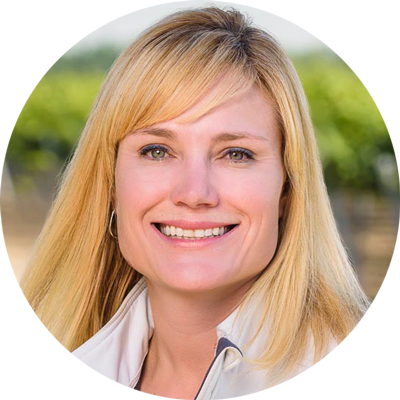
“California faces major obstacles when it comes to our water future. Fortunately, Sustainable Conservation is helping meet those challenges head-on through creative thinking and sophisticated resources. They are assisting water agencies, like Madera Irrigation District, to develop tools so farming and communities alike can thrive.”

“As a U.S.-based, global food company, General Mills relies on California farms for many of our ingredients. Those farms need clean, abundant water to flourish, as do neighboring communities. That’s why we’re proud to support Sustainable Conservation, an organization known for its environmental solutions in partnership with agriculture. Their expertise and relationships help solve challenges that impact our business, consumers, and all Californians.”
Sustainable Conservation turns 25 in 2018. In honor of our anniversary, we’re celebrating the thoughts and perspectives of people who have supported us along the way. Learn more about the environmental paths of our friends Sally Liu, Charlene Harvey, and the Giacomini family of Point Reyes Farmstead Cheese Company.
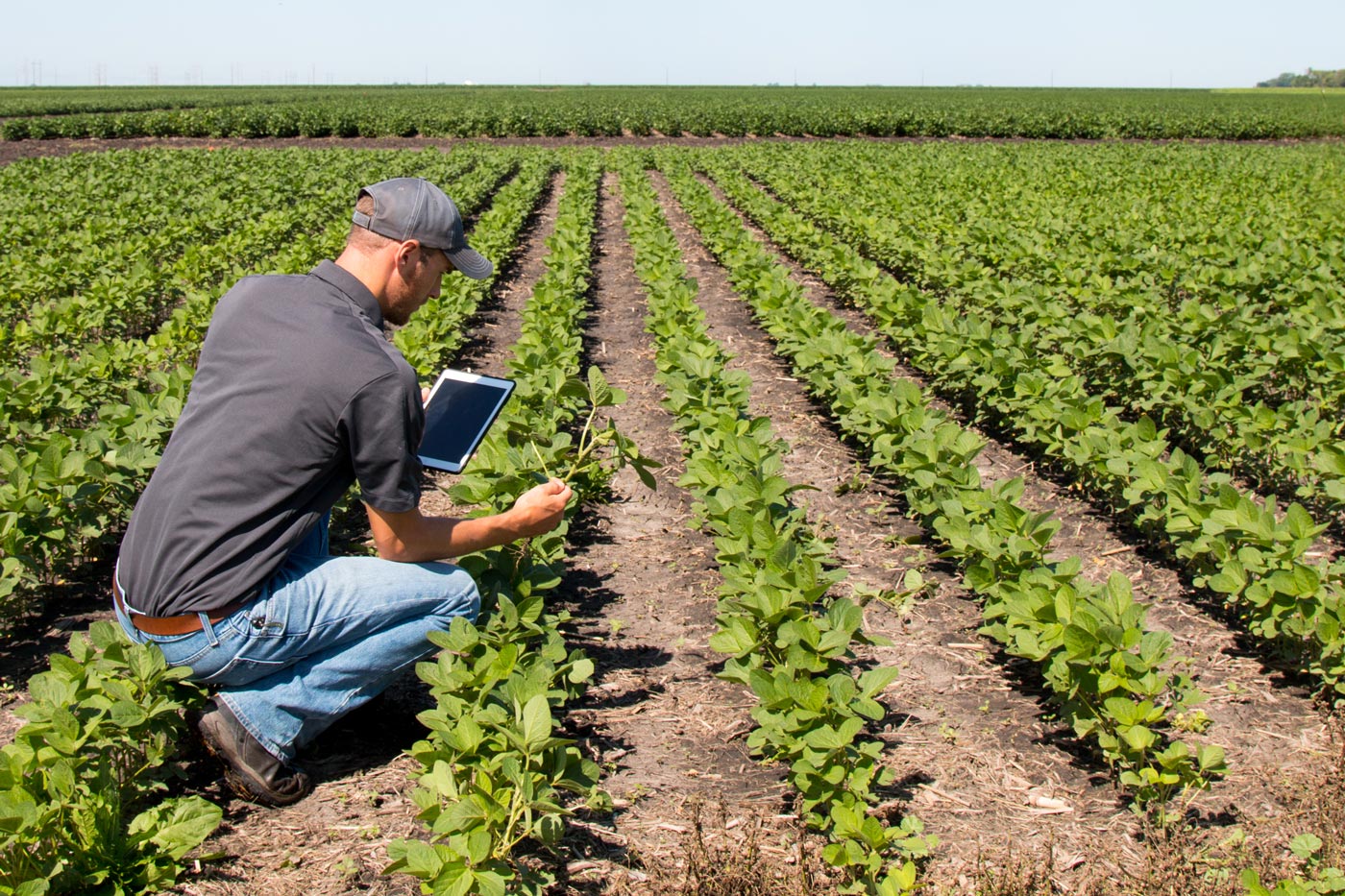
 Sustainable Conservation consistently receives top honors from the country’s premier charity evaluator, Charity Navigator, for our financial strength, excellent governance, and ability to maximize the impact of donations.
Sustainable Conservation consistently receives top honors from the country’s premier charity evaluator, Charity Navigator, for our financial strength, excellent governance, and ability to maximize the impact of donations.

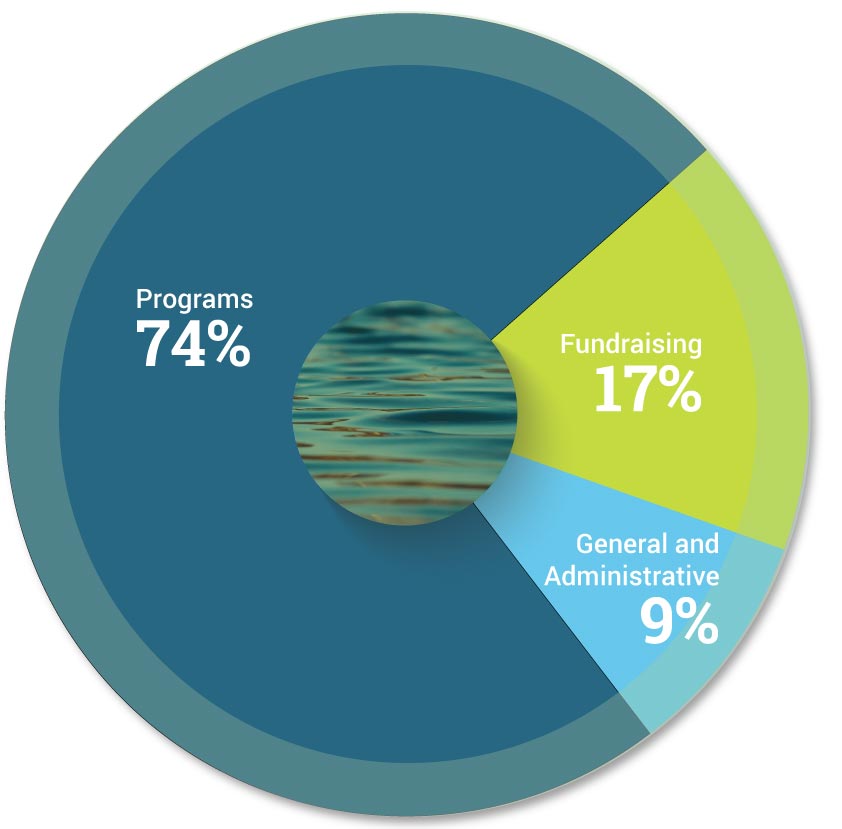
| SUPPORT AND REVENUE | |
|---|---|
| Foundation Grants | $ 2,055,042 |
| Individual Contributions | $ 1,437,174 |
| Government Grants | $ 745,310 |
| Other | $ 77,113 |
| Total Support and Revenue | $ 4,314,639 |
| EXPENSES | |
| Programs | $ 4,184,421 |
| Fundraising | $ 970,892 |
| General and Administrative | $ 506,311 |
| Total Expenses | $ 5,661,624 |
| NET ASSETS | |
| Investment Income | $ 208,078 |
| Change in Net Assets | ($ 1,138,907) |
| Net Assets Beginning of Year | $ 5,455,294 |
| Net Assets End of Year | $ 4,316,387 |
At the end of 2012, Sustainable Conservation launched the Making Big Ideas Work campaign in order to increase revenue and deepen programmatic impacts. Campaign funds were raised between 2013-2015 and expended between 2013-2017. As planned, the remaining campaign funds were expended throughout the year ending on December 31, 2017.
Review the complete financial report audited by Squar Milner, Certified Public Accountants and Financial Advisors.
© Sustainable Conservation. All rights reserved.